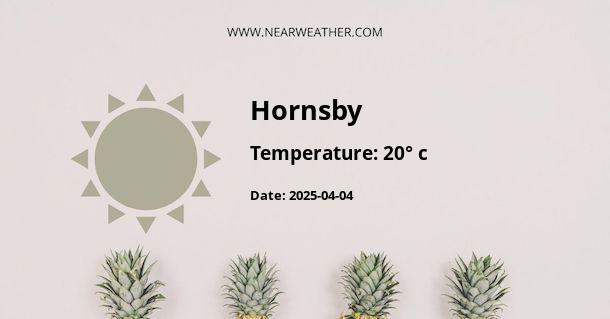The Climate and Weather in Hornsby, Australia
Hornsby is a beautiful suburb located in the northern part of Sydney, Australia. It is known for its stunning natural beauty, including lush parks, serene bushland, and breathtaking landscapes. Understanding the climate and weather patterns in Hornsby is essential for residents and visitors alike to plan their activities and make the most of what this charming suburb has to offer throughout the year.
Overall Climate
Hornsby experiences a warm temperate climate, which is typical for the region. The suburb enjoys mild winters and warm summers, making it an attractive destination for outdoor enthusiasts and nature lovers.
Temperature
The average temperature in Hornsby ranges from 8°C (46°F) in winter to 25°C (77°F) in summer. The coldest month is July, while the hottest month is January. The suburb benefits from its proximity to the coast, which helps moderate the temperature throughout the year.
| Month | Average High (°C) | Average Low (°C) |
|---|---|---|
| January | 25 | 18 |
| February | 25 | 18 |
| March | 24 | 17 |
| April | 22 | 14 |
| May | 19 | 11 |
| June | 16 | 8 |
| July | 16 | 7 |
| August | 17 | 8 |
| September | 20 | 10 |
| October | 22 | 13 |
| November | 23 | 15 |
| December | 24 | 17 |
Rainfall
Hornsby receives a moderate level of rainfall throughout the year, with slightly more precipitation during the summer months. The rainfall helps maintain the suburb's lush greenery and contributes to its picturesque landscape.
The average annual rainfall in Hornsby is around 1,200 millimeters (47 inches). The wettest months are usually February and March, while the driest months are July and August.
Sunshine Hours
Hornsby enjoys a good amount of sunshine throughout the year, with an average of around 2,200 hours of sunshine annually. This allows residents and visitors to partake in various outdoor activities and enjoy the natural beauty of the suburb.
Severe Weather Events
While Hornsby generally experiences mild weather conditions, there are occasional severe weather events that may impact the area. These can include storms, heavy rain, and strong winds. It is important to stay updated with weather forecasts and follow any warnings or advice from local authorities during such events.
Best Time to Visit
The best time to visit Hornsby depends on personal preferences and the desired activities. The summer months (December to February) offer warm temperatures and longer days, making it ideal for outdoor adventures, picnics, and exploring the numerous parks and bushland areas.
If you prefer milder temperatures and want to avoid the crowds, spring (September to November) and autumn (March to May) are great times to visit. During these seasons, the weather is pleasant for activities such as hiking, nature walks, and exploring the local markets.
Winter (June to August) in Hornsby is relatively mild, with cooler temperatures. It may not be the best time for outdoor activities, but it presents an opportunity to enjoy cozy indoor experiences, visit art galleries, or indulge in local cuisine.
Overall, Hornsby's climate offers something for everyone, no matter the season. Whether you are looking for outdoor adventures or a relaxed getaway, Hornsby's pleasant weather ensures a memorable experience throughout the year.
A - Hornsby's Latitude is -33.702438 & Longitude is 151.099304.
A - Weather in Hornsby is 14° today.
A - Climate Conditions in Hornsby shows overcast clouds today.
A - Humidity in Hornsby is 67% today.
A - Wind speed in Hornsby is 13.54 km/h, flowing at 332° wind direction. today.
